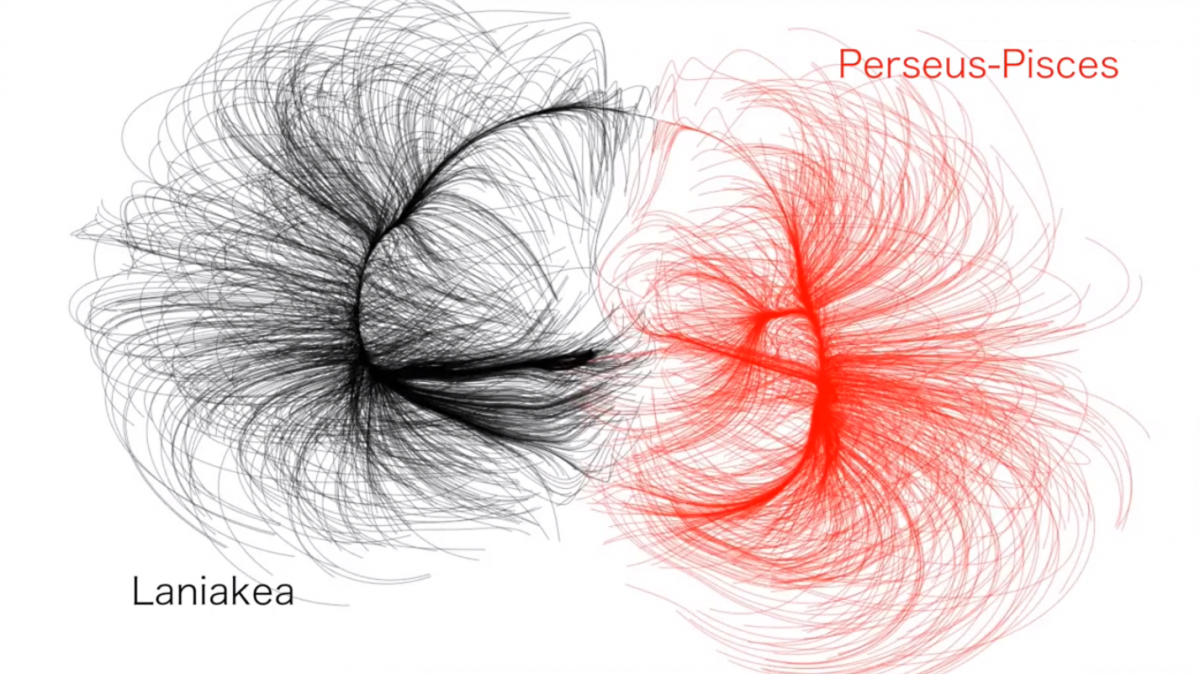[This very rough outline is just a placeholder. I have been putting off writing this article, until I can draw a good diagram.]
“Recall” a connection ![]() instructs how to compare vectors at nearby points on a manifold. It is essential for defining what “parallel” means, and taking certain derivatives. In physics, it is typically obtained from a metric. This case is called a metric connection or Levi-Civita connection. The most familiar expression of a connection is the connection coefficients
instructs how to compare vectors at nearby points on a manifold. It is essential for defining what “parallel” means, and taking certain derivatives. In physics, it is typically obtained from a metric. This case is called a metric connection or Levi-Civita connection. The most familiar expression of a connection is the connection coefficients ![]() , which are called Christoffel symbols in the special case of a metric connection.
, which are called Christoffel symbols in the special case of a metric connection.
One intuition is the gradient of basis vector (fields). ![]() . This decomposes the gradient of one basis vector field in terms of all the basis vectors. In fact, this gradient is expressed in totality by the total covariant derivative
. This decomposes the gradient of one basis vector field in terms of all the basis vectors. In fact, this gradient is expressed in totality by the total covariant derivative ![]() … For each fixed value of
… For each fixed value of ![]() (and choice of basis), this is actually a tensor, of rank 2.
(and choice of basis), this is actually a tensor, of rank 2.
However an even better one is a map from vectors to rotations. Input vector is the direction a frame is moved along the manifold. (To be slightly more precise, for an “infinitesimal” distance. Though one could certainly be much clearer still.) The output is the rotation the frame undergoes. Relative to the frame (field) already defined there, that is.
Cartan knew this interpretation. For example his book Riemannian geometry in an orthogonal frame  is clear. It is not incidental, but infused throughout. Starting with section 1 of chapter 1! I am thoroughly impressed.(While I was well aware Cartan is a famous geometer, naturally I have not read much of his work carefully in the original sources. firsthand, experiential.)
is clear. It is not incidental, but infused throughout. Starting with section 1 of chapter 1! I am thoroughly impressed.(While I was well aware Cartan is a famous geometer, naturally I have not read much of his work carefully in the original sources. firsthand, experiential.)
I am deeply passionate about geometric intuition, because I like deep conceptual understanding. Conversely I feel very unsatisfied when equations are presented without meaning behind them — especially things like connections or curvature tensors, in a pedagogical setting. (It must be hard to teach a course on general relativity, where even the requisite differential geometry must be crammed in first. Besides it may not even be a lecturer’s specialty. Hence I am not criticising courses… much. But even most textbooks don’t present the degree of intuition which I would prefer. But at least one piece of good news for me personally is that this gives me an avenue where I can contribute. And I feel enthusiastic about that. Now this won’t actually be original understanding, in many cases. It would be more about drawing attention to under-represented insights.)
It seems intuition sometimes gets lost, historically. One cause seems to be abstraction and generalisation. Now, I have absolutely no problem with those. It is valuable and insightful, and it is good that specialists work on that. But I like to also see clear motivation for introducing a quantity. And knowing the original historical motives by the discoverer(s) can make it more relatable. Covectors are a good example. Even if a strange circuitous route (like a recent video about optics and Lagrangians iirc), because connects to existing insights. Also could add confidence: “I could do that too!” [The opposite is refining and polishing results. Now that is certainly valuable, in fact it is absolutely essential (pragmatically speaking) because it is too much work to read original sources, in most cases. But this already receives tremendous emphasis.]
 evaluates in detail. I certainly appreciate the modern curvature-only view for what it affirms, just not what it denies.
evaluates in detail. I certainly appreciate the modern curvature-only view for what it affirms, just not what it denies. . In our universe, matter forms a “cosmic web”, which includes filaments with a heavy “node” at the end — a cluster or supercluster. On the other hand, cosmic “voids” are vast regions containing less matter than average. Over time, the matter clumps further, while the voids grow larger and sparser.
. In our universe, matter forms a “cosmic web”, which includes filaments with a heavy “node” at the end — a cluster or supercluster. On the other hand, cosmic “voids” are vast regions containing less matter than average. Over time, the matter clumps further, while the voids grow larger and sparser.